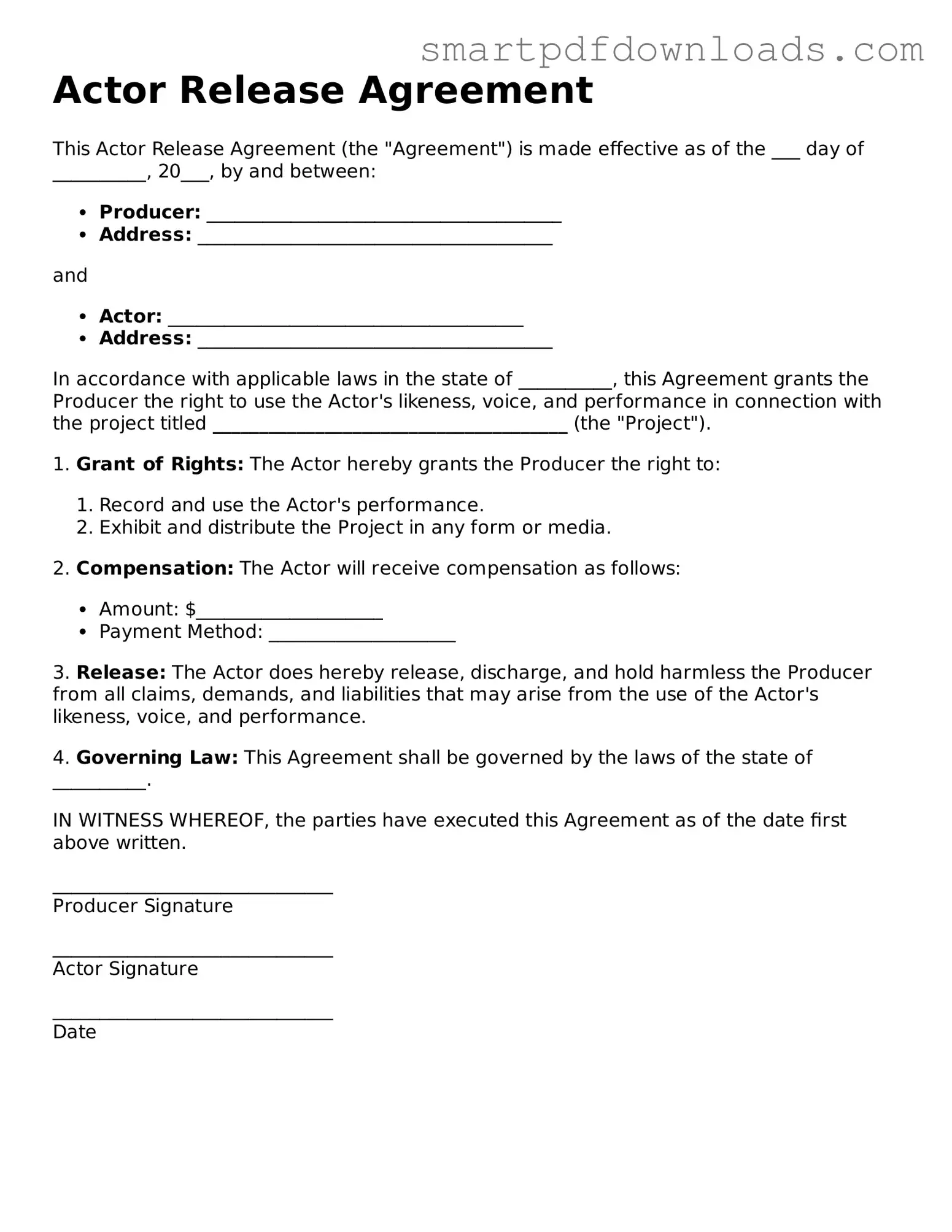Actor Release Agreement
This Actor Release Agreement (the "Agreement") is made effective as of the ___ day of __________, 20___, by and between:
- Producer: ______________________________________
- Address: ______________________________________
and
- Actor: ______________________________________
- Address: ______________________________________
In accordance with applicable laws in the state of __________, this Agreement grants the Producer the right to use the Actor's likeness, voice, and performance in connection with the project titled ______________________________________ (the "Project").
1. Grant of Rights: The Actor hereby grants the Producer the right to:
- Record and use the Actor's performance.
- Exhibit and distribute the Project in any form or media.
2. Compensation: The Actor will receive compensation as follows:
- Amount: $____________________
- Payment Method: ____________________
3. Release: The Actor does hereby release, discharge, and hold harmless the Producer from all claims, demands, and liabilities that may arise from the use of the Actor's likeness, voice, and performance.
4. Governing Law: This Agreement shall be governed by the laws of the state of __________.
IN WITNESS WHEREOF, the parties have executed this Agreement as of the date first above written.
______________________________
Producer Signature
______________________________
Actor Signature
______________________________
Date
